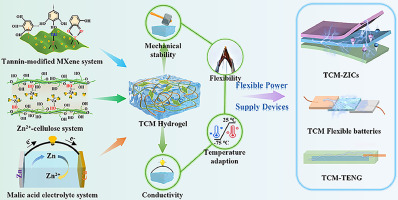
Extremely adaptable fuel cells constructed from cotton thread could electrify the forthcoming generation of wearable electronic gadgets. These cutting-edge fuel cells, which are slender and rope-like, transform chemical energy derived from methanol into electricity. They present an encouraging substitute for current flexible power options such as lithium-ion batteries, solar panels, and zinc-ion batteries, as they preserve energy even under significant stress and possess a greater energy density.
As mobile and wearable gadgets become more widespread, the need for proper power sources has escalated. Existing solutions frequently encounter difficulties like low energy density, slow charging times, and reliance on light, restricting their applicability for broad adoption. Fuel cells, on the other hand, offer an enticing answer because of their elevated energy density and capability to quickly replenish fuel.
Feng Yan from Soochow University in China emphasizes the barriers that have previously obstructed the use of fuel cells in flexible applications. However, Yan and his team have made progress in this area by creating fiber-shaped direct methanol fuel cells (FDMFCs) from woven cotton threads coated with a specialized gel. This coating maintains the yarns’ capillary properties, permitting swift absorption of methanol fuel.
The design of the FDMFC involves enveloping the gel-coated threads with slender electrode assemblies and enclosing them in a nylon casing. The result is a device measuring just 5.9mm in diameter.
Yan points out that the capillary action allows refueling within a minute, achieving an energy density of 161.36 Wh kg⁻¹, exceeding the typical energy density of comparable lithium-ion batteries. In comprehensive testing, the FDMFCs demonstrated outstanding performance across a broad temperature range (-20ºC to 70ºC), and showed enhanced power densities when flexed. They survived over 100 hours of intense heat and more than 10,000 bending cycles, maintaining consistency.
The durability of these cells extends to enduring punctures, exposure to water, and segmentation, with smaller cells functioning cooperatively nearly as effectively as a complete one.
Jay Benzinger from Princeton University considers the research a groundbreaking method in fabricating flexible methanol fuel cells. By removing the necessity for a fuel tank and pump, the cotton thread acts as a spongy membrane to hold liquid fuel. This innovation promises potential for compact systems, such as military drones or geographic surveying instruments, and possibly even biological uses.
Despite the advancements, Benzinger warns about the dangers of carbon monoxide poisoning in direct methanol fuel cells and calls for more examination of electrocatalysts to mitigate this concern.